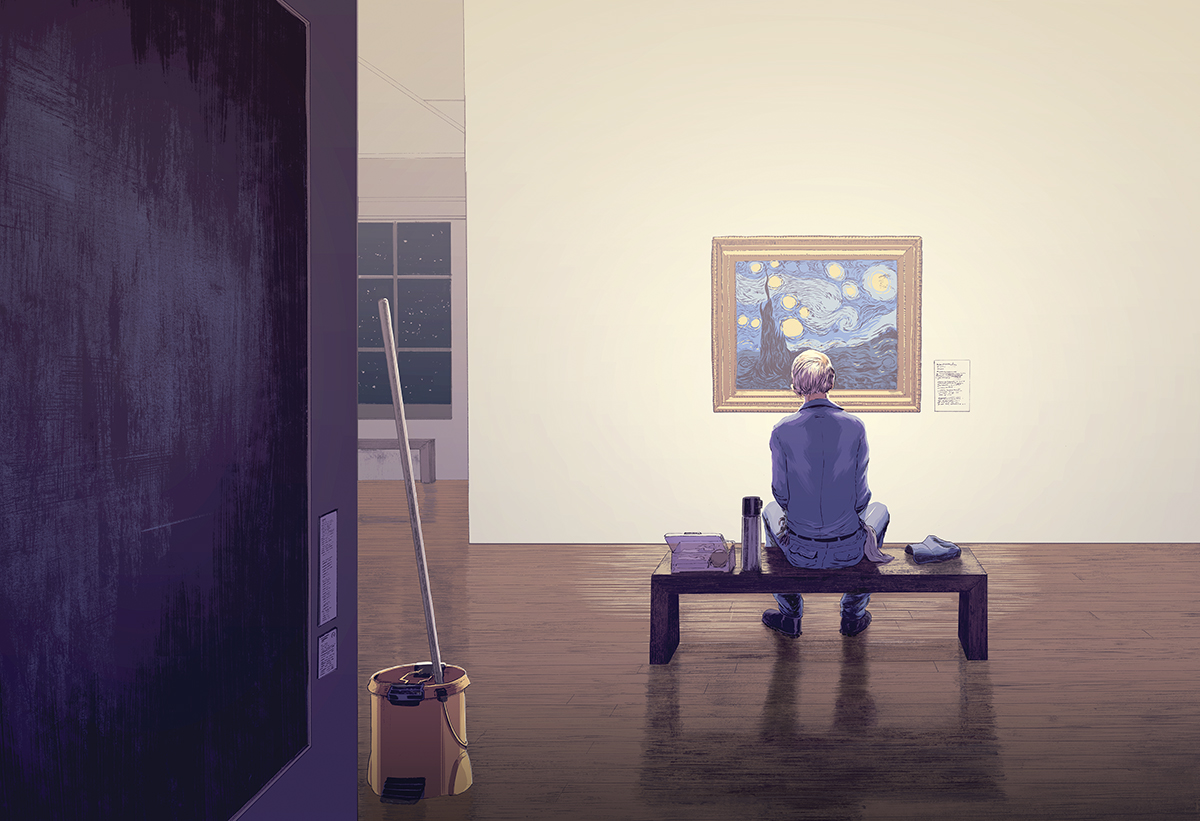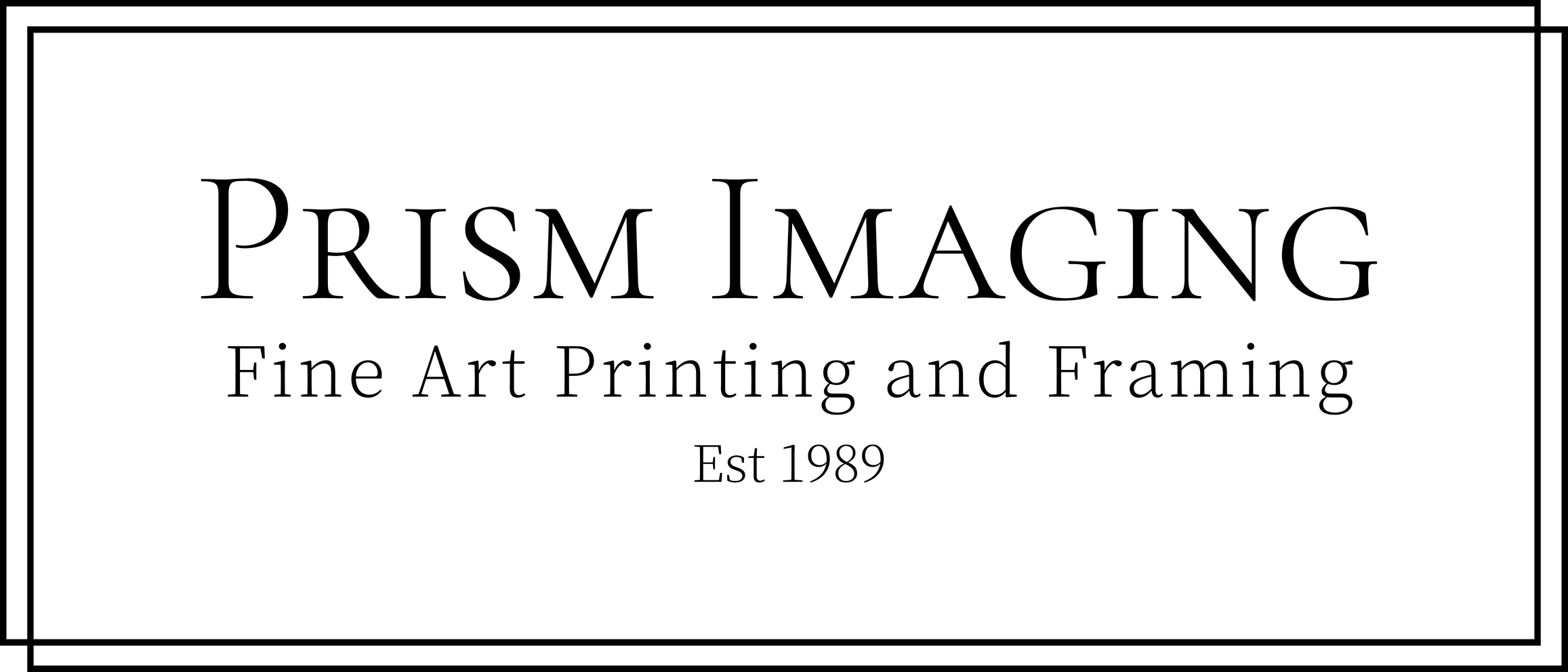Elizabeth Bull
Welcome to the first of our monthly artist feature at Prism. Each month we endeavour to show case the many artists that we proudly work with.
So…with love and awe we would like to introduce our FIRST artist…Guy Shield!
Guy Shield is a Melbourne based illustrator/storyteller. With a passion for scenic story telling, Guy’s illustrations transport you to a world of colour and light, breathtaking to behold and ponder. So breathtaking in fact, the Jacky Winter Group (the creative agency known for representing the very best contemporary Australasian commercial artists) exclusively look after his commissioned work.
Want to get to know Guy better? Here’s what he shared with us in a recent Q&A.

What are your major influences?
Influences definitely vary for me — in terms of subjects, I’m pretty obsessed with the nuances/moments of everyday life, and finding the beauty in the familiar and seemingly mundane, focusing primarily on light and colour. In terms of artists, there are a tonne of old and new artists doing great things that constantly play a role in my approach to my work. Adrian Tomine is a US Graphic Novelist whose stories and style has long been a big inspiration for me. Dan Clowes’ graphic novels and style definitely has an impact as well. Other artists out there include Matthew Woodson particularly for his ink work, Señor Salm, Emma Leonard, Owen Freeman, Tomer Hanuka and Teagan White as well. I also love the work of some of the classic American Illustrators, namely Frank McInnes, Robert Fawcett and Norman Rockwell. Japanese Woodblock artist Yoshida Hiroshi’s work I also adore. There are so many, but these are handful I really look up to and take constant influence from.

How do you describe your work?
I always have a difficult time answering this question, but predominately I describe it as graphic novelly, with a colour and light-filled punch. Atmospheric gets used a lot to describe my work.
At what point did you realise you could turn illustration into a serious career?
It definitely took a while. I loved drawing when I was growing up, and originally had very secret plans of becoming a comic book artist. There wasn’t much of an industry here in Australia, and I didn’t know a thing about independent publishing, so instead I pursued a career in graphic design. I worked in publishing for about 10 years, but increasingly became obsessed with illustration throughout it, spending a great deal of time outside of work drawing and honing my skills. I never really planned on going into illustration full time, I simply ruled it out as an unrealistic career in terms of sustainable income, and I didn’t have enough faith in my work or belief that people would be that into it. I loved looking at band posters and the extraordinary marriage between design and illustration, and wanted to get into that on the side. I kept drawing, slowly convincing the editors at my work to include my illustrations in the magazines I was designing, and eventually a folio grew out of it. Once I gained representation through the Jacky Winter group, I started getting more confident with my work and they really helped me grow it into a great secondary income, showing me the ropes of the industry and nurturing my folio. It got to a point about 3-4 years ago where I was working 40-50 hours a week at my day job as a designer, and then doing an additional 30 hours a week as an illustrator. I was burning out pretty rapidly and enjoying the illustration thing far more than the design thing, so I threw it all in and set out on my own, with the agency taking care of the business end of things. It was terrifying, but once it started working, there were a lot of self-high-fives.

Have you ever thought about producing comics or are you more interested in singular imagery to portray a story?
I’ve always had stories bouncing around in my head, and studied a lot about how comics work and the art of storytelling, but somewhat lacked the patience and fortitude to really put together an extensive story. I’m sure one day I’ll start short and do it that way. I’m not ruling it out, but my style has definitely taken a far more realistic turn in the past couple of years, which can be quite laborious and involved, and it’s constantly changing in small ways, to the idea of dedicating one style to a big book or graphic narrative feels a little bit daunting/stifling!
What paper do you like to print on for the style of your work?
I’m printing on Museo Portfolio Rag. It’s thick, luscious, feels great, has a subtle texture to it and it holds detail/colour really nicely. It’s also really white, so it looks super clean.

Do you find that people experience your work differently when it’s printed as opposed to online?
I’m more of a print freak than an online fan. While I like the colour gamut online, I do think of my colours in print terms more than screen terms. I’m not sure how people experience it differently, but I’d prefer it if people had more of a chance to see it in print than through pixels.
Your work looks highly digital, how much of your process uses traditional ink to paper methods?
Just out of making a sustainable career doing illustrations for magazines and newspapers, 90% of my work is produced digitally, using a Wacom Tablet and a whole heap of Photoshop brushes, but I still like dabbling my toe in the traditional realm, so if there’s time in a project, or if I’m working on something personal, I’ll break out the paper and brush and draw the original in India ink, and colour it in Photoshop. There’s something really cathartic about the traditional approach. There are more nuances, mistakes and learning curves, so it feels more authentic, which I think is important. Having that undo button can make me lazy sometimes, or produce work that lacks character or grit.

Do you ever struggle to come up with ideas for an image and if so, how do you get yourself back on track?
Oh constantly! The quarterly publication I work on, Kill Your Darlings is a great example of something I have creative reign over, but constantly get flummoxed by the idea of what to draw. Writers get writers block, well the same goes for illustrators. My usual method for tackling this is to get out, away from the screen, away from work that intimidates me and just go and watch life. Ideas don’t necessarily happen in front of me when I do that, but it’s usually the train of thought involved with spectating or thinking about the lives of the strangers I’m encountering along the way that lead me to a few narrative ideas. When there’s a brief from say, a magazine or advertiser, I usually get a pretty clear idea in my head about how to communicate the idea. Sometimes it’s tricky, in which case I’ll either sit or home or out somewhere, contemplate it, research it further and rough out some ideas before submitting more formalised drafts.
How much time do you spend on commissioned work vs. personal work?
These days, I’d say it’s about 90/10 split, favouring commissioned work. It’s a great luxury for me to be able to essentially work for myself, and it feels weirdly privileged sometimes… just drawing for a living, so the consistent focus for me is making the business work and getting repeat clients by working hard and keeping them happy. Most of my personal pieces are created in my after hours, but due to the solitary nature of my work, I try to keep those hours for socialising and finding balance. That being said, sometimes I’ll have an idea for a personal piece that ends up eating all my time (both work and after hours). But that’s just fun really.

How did you first get involved with the Jacky Winter creative agency?
I feel pretty lucky that I studied design at the same time the founder, Jeremy Wortsman studied it, so we were mates for a while and I watched him start up the agency from scratch. He was kind enough to keep an eye on my work, provide encouraging feedback and eventually made me part of the junior artist’s division, the Hatch. About a year into it, I got shifted into the mainstays and the relationship gained traction from there. For me it’s allowed a lot more freedom in my work, not having to worry too much about the back end of things, and focus on what I really love about it — drawing, so it’s been amazing.
Do you have any major projects for the future?
Nothing too major on the cards. I’m currently trying to find a little bit more of a voice for myself as an illustrator. As someone that communicates through images, which can be such a powerful medium, I feel like I’ve got the potential to say more, and say it differently to most. So I’m currently focusing on some pieces that utilise that, with hope that I can either draw greater attention to something concerning, or at least convey some of the things that I feel need broader attention in everyday media.

Guy’s artworks are available for purchase. Visit his online store at guyshield.bigcartel.com
Credits
Questions by Georgia Quinn
Intro by Stella Nguyen
Art Direction by Jo Nixon

